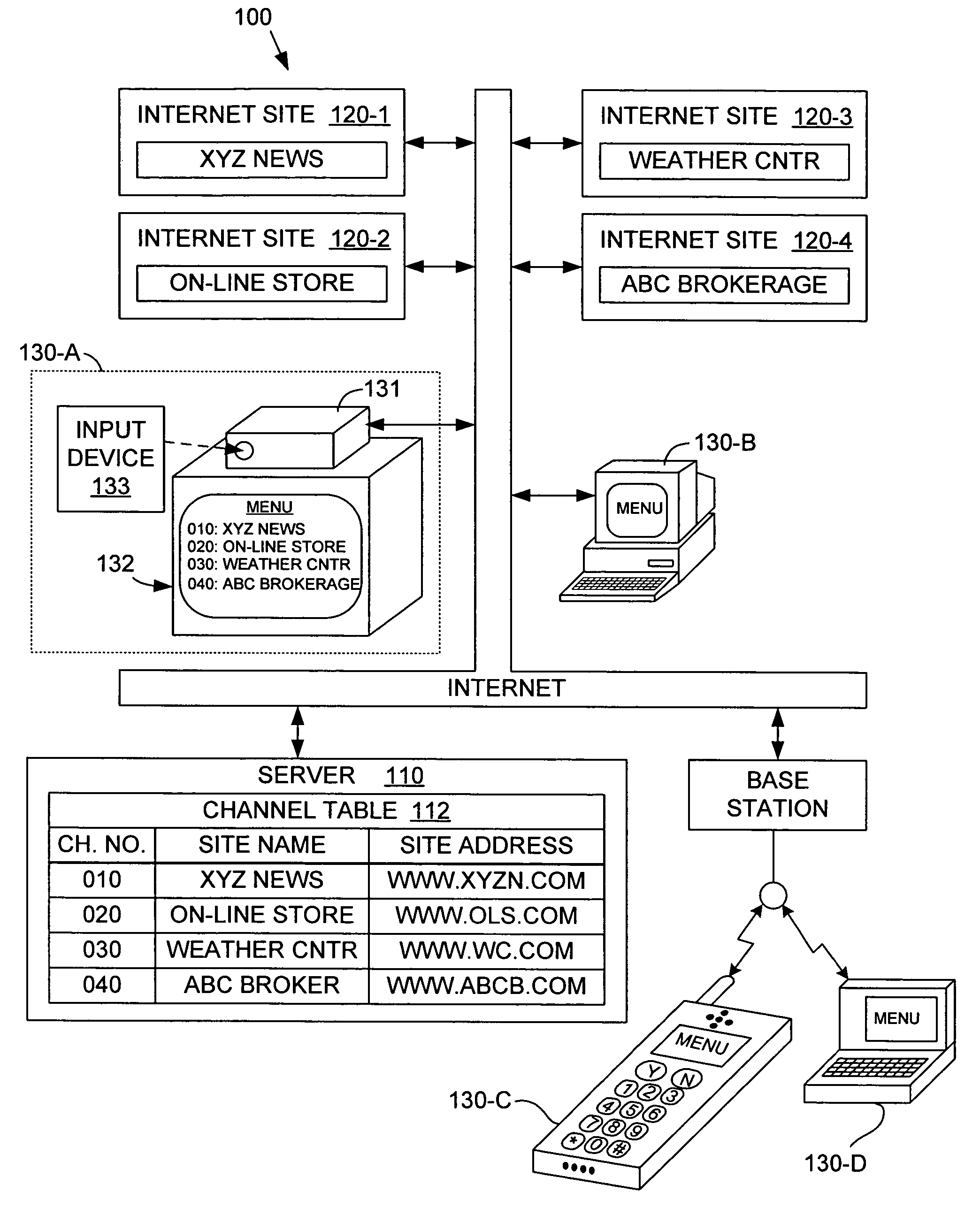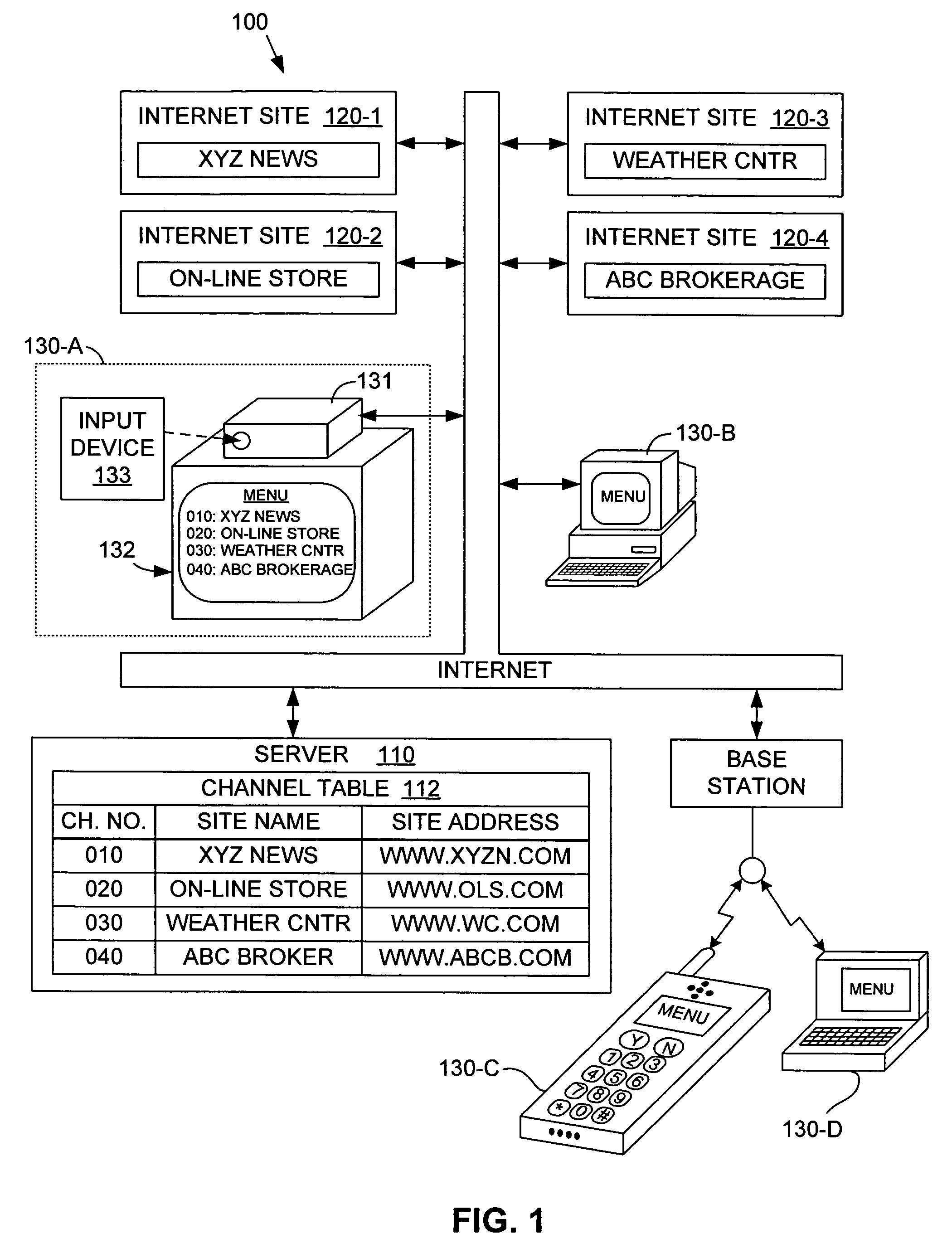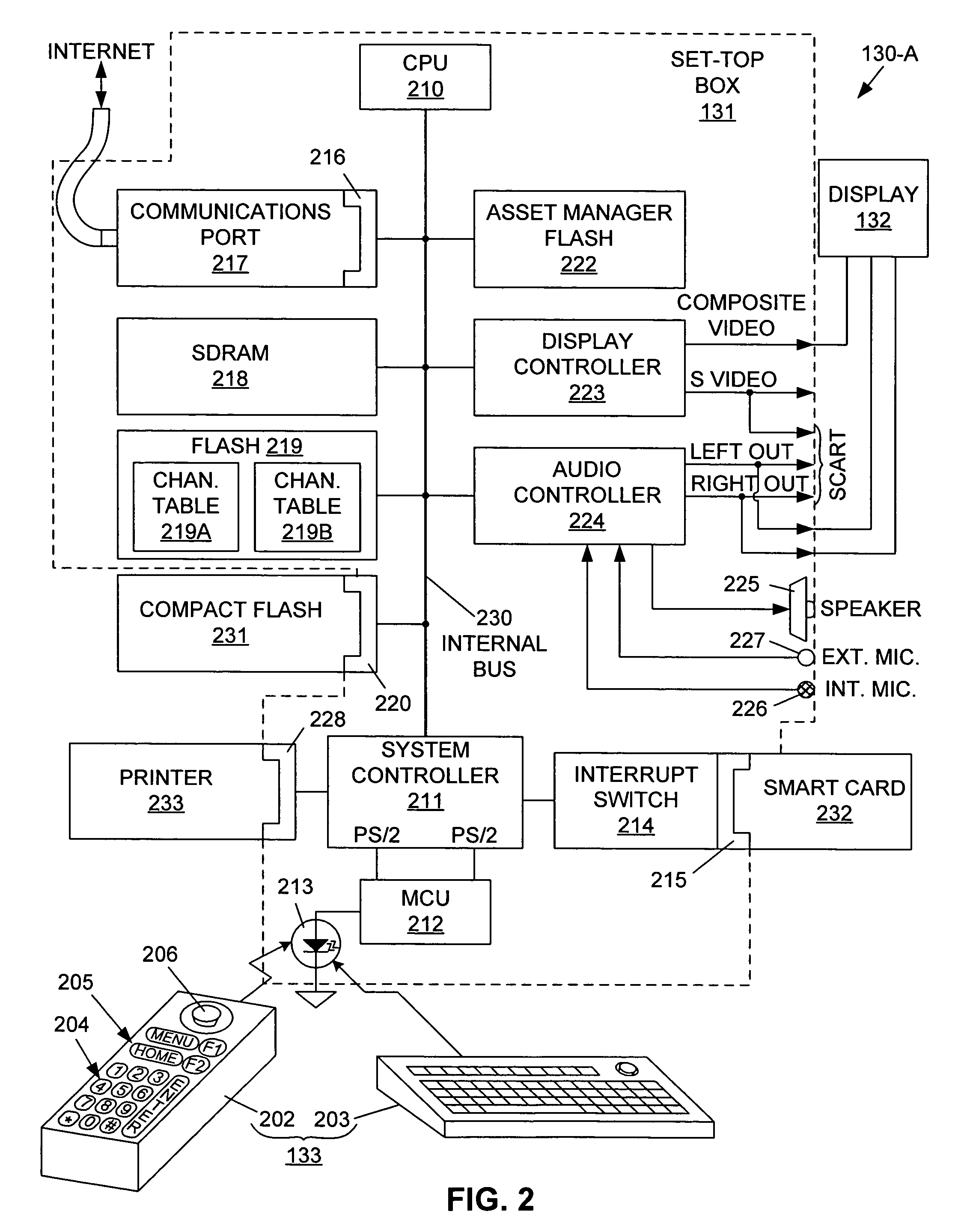[0008]In accordance with a first aspect of the present invention, each user terminal includes a memory circuit (e.g., a flash or SDRAM memory) that is configured to store a local version of the channel table. In a menu mode, channel numbers and associated Internet site names stored in the local channel table are displayed on, for example, a television or other
display device. The user terminal is provided with an
input device (e.g., a device similar to a television
remote control) that allows the user to select an Internet site from the displayed menu by entering the channel number displayed next to the selected Internet site name using, for example, a
numeric keypad. When a channel number is entered, the
Internet address (e.g., URL) associated with the entered channel number is read from the local channel table, and the user terminal is connected with the selected Internet site by transmitting the
Internet address onto the Internet. By allowing a user to access internet sites using channel numbers, the user terminal of the present invention provides a key
advantage over conventional networks that access internet sites using pull-down displays. That is, when a large number of Internet sites are stored in such pull-down displays, a user must perform the tedious task of locating and highlighting a corresponding site name or icon before accessing the selected Internet site. In contrast, similar to located a favorite
television station, the present invention allows a user to enter a memorized channel number, thereby immediately accessing the selected Internet site without manipulating pull-down displays. Further, by storing and accessing the Internet sites using a channel table, the manufacturing costs associated with user terminals are significantly less than conventional personal computers.
[0009]In accordance with another aspect of the present invention, each user terminal includes a non-volatile memory (e.g., a
flash memory) for storing a semi-permanent version of the channel table, and a volatile memory for storing a temporary version of the channel table. At the beginning of each user session, a
control unit of the user terminal interacts with the network
server to authorize the user session (e.g., by comparing information transmitted from a
smart card with information stored at the
server), and then copies the semi-permanent channel table from the non-volatile memory into the volatile memory if the user session is authorized. By providing a semi-permanent channel table in the non-volatile memory, irritating delays caused by downloading channel table data from the server are minimized. Further, because the
control unit only operates using the temporary channel table stored in the volatile memory, which is erased at the beginning of each user session, unintended access of, for example, a minor user to adult Internet sites, is avoided. In other words, each user terminal is provided with an innate
security system because the
control unit must copy the semi-permanent channel table from the non-volatile memory into the volatile memory before the user terminal can be used to access Internet sites.
[0010]In accordance with another aspect of the present invention, each user terminal downloads the master channel table from the network server over the Internet, thereby providing a local copy of the master channel table that can be accessed during a user session. As mentioned above, channel numbers and associated internet site names are then read from the local copy and displayed, for example, on a television, thereby allowing a user to access each Internet site simply by entering a selected channel number. By supporting channel table downloads from the server, updated channel
table information is conveniently provided to each user terminal when the master channel table at the server is updated. Further, guest users are able to access personal channel
table information at remote locations simply by identifying themselves to the server using, for example, a
smart card.
 Login to View More
Login to View More  Login to View More
Login to View More 


